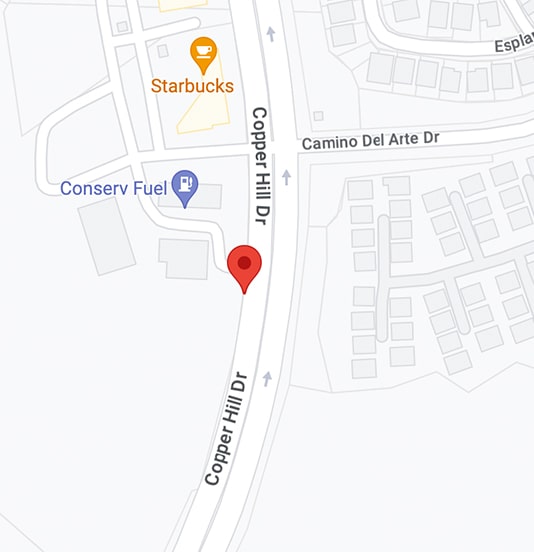Most people understand the importance of observing proper oral health practices and undergoing regular dental examinations to preserve their smile. However, people often overlook the importance of healthy gums. A significant percentage of adults in the United States suffer from gum disease, exposing them to the risk of tooth loss. You are at a higher risk of gum recession if you have a lip or tongue piercing, wear braces, have periodontal disease, chew tobacco, or brush your teeth aggressively. When the gum tissue recedes, it exposes your gum line and the tooth root, creating pockets. Gum pockets allow the buildup of bacteria, causing gum disease.
Patients with receding gums seek ways of restoring their gum line and enhancing their smile. However, most people fear the lengthy and painful traditional gum grafting treatment. Pinhole gum rejuvenation is ideal if you want to restore your receding gums but do not want to undergo gum grafting. At Valencia Advanced Dentistry at Copperhill Smiles, we have experienced dentists in Santa Clarita who provide pinhole gum rejuvenation treatment at an affordable cost. This treatment is minimally invasive yet effective in treating gum recession.
Understanding Pinhole Gum Rejuvenation
Pinhole gum rejuvenation, also known as pinhole surgical technique (PST), is a modern technique dentists use to restore gum contours. This surgery is scalpel and suture-free. Pinhole gum rejuvenation involves making tiny holes in the gum tissue. Surgeons use special tools to guide and manipulate the gums over the section of the tooth that has gum recession to cover the exposed part.
You will not experience bleeding, pain, or swelling because no cutting or stitching is involved when performing the procedure. Pinhole gum rejuvenation is the most preferred option over the invasive gum graft surgical procedure. You will also require one dental visit to complete this treatment and enjoy a short recovery period.
Gum Recession Treatments
You should consider seeking treatment if your gums have receded to the point that they pose the risk of gum disease. You should not expect the gum recession to resolve itself without medical intervention. You can enhance your oral health and prevent tooth loss if your dentist discovers the condition early and administers the proper treatment. Generally, surgery is the standard treatment for receding gums.
Most general dentists advise their patients to undergo gum grafting surgery to address and treat gingival recession. Unfortunately, this conventional gum tissue grafting treatment is painful, lengthy, and highly invasive, requiring extended recovery. Most dental patients who are referred to a periodontist for a gum graft never begin the treatment. Others never complete the treatment because of the horrific pain. Most patients are terrified and decide to retain their severe oral health problems rather than undergo a gum graft.
Luckily, pinhole gum rejuvenation can save patients from this agony. This treatment is minimally invasive, painless, and has a shorter recovery period. It is the perfect alternative to conventional gum tissue grafts.
The Leading Causes Of Gum Recession
Gum recession is typically the first sign of periodontal disease. It occurs when the gum tissue pulls away from the teeth, exposing the roots underneath. Gum recession creates holes between the gum line and the tooth. If left untreated, the holes enhance the breeding of bacteria and plaque buildup, leading to severe oral issues like infection, tooth decay, and tooth loss.
Gingival recession is gradual, and most patients fail to realize that they suffer from it until they develop symptoms. Tooth root exposure is the first sign of a gingival recession you will likely experience. In this case, your teeth can appear longer than usual. The other common signs of gum recession include:
- Sensitivity when cleaning the teeth
- Sensitivity to cold or hot substances
- Pain on the gum line
You should consult your dentist immediately if you notice the above signs. Your dentist will work to arrest the condition before it worsens. It is always advisable to understand the cause of your oral problem to prevent recurrence as you seek treatment.
Aggressive brushing of teeth is one common cause of gingival recession. Most people believe that brushing teeth vigorously makes them cleaner. This is however not true since brushing your teeth aggressively could cause the gum tissue to recede. You must therefore use proper brushing techniques by ensuring that you brush your teeth gently to prevent recession. Brush your teeth using a brush with soft bristles to avoid irritating the gum tissue.
Periodontal or gum disease is another leading cause of gingival recession. This condition arises when calculus or plaque gathers on the gum line, causing the gum tissue to detach from the teeth. Plaque buildup occurs because of poor oral hygiene, like failure to floss and brush the teeth regularly. Your teeth surface is never adequately cleaned if you do not brush and floss. This could give way to plaque accumulation.
If plaque accumulates for a long time, it can become tartar. Typical brushing cannot remove tartar, which is hardened plaque. You should visit your general dentist semi-annually for a dental examination and professional cleaning. Tartar on your teeth can allow harmful bacteria to breed, leading to gum recession and gum disease.
Your gingiva tissue could also recede if you grind your teeth while awake or asleep. If you have a tooth-grinding problem, wear a mouthguard to protect your teeth and gum tissue.
Genetic predisposition could also cause gum recession. You are at higher risk of developing gum recession if your family has a history of people developing gingival recession. Proper oral health care and treatment can prevent or delay gingival recession and its effects.
Candidates For Pinhole Surgery
Pinhole gum rejuvenation is a less invasive option for bone grafts. This procedure aims to restore the receded gums to their natural position. A surgeon can accomplish this by covering exposed tooth root parts and thickening the gingiva tissue to prevent future recession. You can only qualify for this procedure if your gum or periodontal disease is inactive.
When you visit your dentist to seek treatment for gum recession, the dentist will assess your gums to diagnose and develop a comprehensive treatment plan. The entire gum review could involve the following:
- The whole gum tissue and pocket chart for all the teeth
- A detailed quotation of the treatment plan
- Discussing the available treatment options and substitutes
- A thorough assessment of your entire gum health, including a complete diagnosis
- Intra-oral pictures and a 3D scan for record-keeping
If your dentist discovers you have ongoing gum disease after the checkup, you will not undergo the treatment immediately. Your dentist will first arrest the condition before you undergo the procedure.
The Process Of Pinhole Gum Rejuvenation Surgery
The pinhole procedure involves several stages. First, the dentist will thoroughly review your gum tissue before the procedure. Your dentist will determine the proper treatment plan after establishing that you are a candidate for the treatment. Your general dentist will then send a predetermination submission to your dental insurance.
You will undergo a thorough cleaning before the procedure because you will not clean your teeth for some following the procedure. Your dentist will provide you with post-operative instructions after treatment. You must adhere to the post-operative instructions to enhance optimal healing.
During the procedure, your oral surgeon will make a tiny hole using a small needle in the affected gum tissue. The dentist will use a unique tool to gently loosen or gently manipulate the gum tissue through the pinhole. The unique tool assists in expanding and pushing the gum line to cover the section of the exposed root.
Pinhole gum rejuvenation does not involve grafts, sutures, or cuts. Once the gum tissue is in the desired position, the dental surgeon adjusts it and secures it using small collagen strips. The collagen strips provide support and ensure that the gum tissue remains in the same position in the future.
The procedure will last one hour, and the cosmetic results are instantaneous. You can resume your daily activities within one to two days after treatment.
The Precautions You Should Take After The Surgery
The pinhole procedure is performed once, and the results are permanent. This procedure achieves lifetime results, but you must make a few lifestyle adjustments, like wearing a mouthguard while sleeping to avoid teeth grinding. Gentle and proper brushing and flossing of teeth will ensure permanent results.
If you continuously exert pressure on the gingival tissue and teeth after the surgery, there could be a relapse. The results of the pinhole gum rejuvenation will last if you adhere to the post-operative instructions and observe good oral hygiene.
The Cost Of Pinhole Gum Rejuvenation Surgery
Unlike conventional gum tissue grafts, pinhole gum rejuvenation is cheaper. Traditional gum grafting procedures are expensive because of the extra surgeries required to harvest the gum graft from the palate. On the other hand, no additional surgeries are necessary under the pinhole procedure, making it cost-friendly.
The cost of pinhole surgery will depend on the number of teeth affected. A pinhole surgery typically costs $1,750 to $3,500 per recession area. This could be expensive for most patients. Luckily, most health insurers cover this procedure. Your surgeon will send a predetermination to your dental insurer once you book the procedure to confirm if your dental insurance will cover the treatment.
Gum Graft Surgery
Most general dentistry services recommend the traditional bone graft to date. They allege that it is an effective treatment for receding gums. The pinhole treatment has a superior advantage over conventional treatment yet achieves similar results as the bone graft surgery. Therefore, pinhole treatment is highly recommended for patients. However, it is essential to understand gum grafting to appreciate the advantages of a pinhole procedure better.
A gum graft procedure is an oral surgery that treats gum recession. The procedure involves covering the tooth structures that are exposed and thickening the gum line to enhance general oral health. This procedure involves removing gum tissue from the palate or roof of the patient’s mouth. The removed gum tissue is transferred to the recession area through surgery. A periodontist can obtain a substitute graft from an accredited bone or gum tissue bank if you do not want the gum tissue extracted from your palate.
Dentists administer anesthesia during gum graft surgery to numb the gum area and teeth. You must understand the sedation options and choose the one that will relax you during the treatment because the gum tissue graft is painful. You could opt for IV, oral, or nitrous oxide sedation. Your dental specialists will cut the area of receding gums once you have been sedated and are comfortable. The surgeon will then make a flap, exposing the teeth' roots and cleaning them more manageable. Exposing the roots will also make it easier to remove any tartar or plaque buildup.
Your dentist will harvest the gum tissue for the graft after creating a flap and cleaning the tooth roots. The dentist achieves this by cutting your palate to remove a small wedge of your inner gum tissue while leaving the outer layer of your palate intact. After harvesting the internal tissue, the surgeon will cover the extraction site with the outer layer and stitch it back. This process is excruciating and usually takes a more extended period. You could talk to your surgeon about using a substitute for a donated tissue if you want to skip the harvesting step. The surgeon will attach the gum tissue graft to the exposed structure of your teeth or the recession area.
Finally, the oral surgeon will reposition the gum tissue and stitch it into place, covering all the recession areas. During stitching, you will have two options for sutures. The first requires a follow-through for removal, and the second falls out independently.
On average, one gum tissue graft lasts one hour. Therefore, the treatment duration will depend on your required graft number. Numbing before surgery makes the treatment painless, even if the treatment is painful. However, after the surgery, you will experience soreness. You should go over post-operative instructions to help you manage the symptoms.
Aftercare And Recovery Period
After a gum graft surgery, you will have a gauze and a periodontal dressing. You will have the gauze for a period that does not exceed 30 minutes. On the other hand, the periodontal dressing will remain for several days after the procedure. You could go home immediately after a pinhole surgery, but with gum surgery, you will stay in the hospital for several hours until your surgeon clears you. You will also require someone to drive you home because of the sedation.
You could experience pain, inflammation, and bleeding on the first day of treatment. In this case, you should avoid strenuous activities and take sufficient rest. Strenuous activities and heavy lifting could increase your heart rate, which could, in turn, increase inflammation, bleeding, or pain. Avoid strenuous activities for at least one week.
One gum graft could last two weeks to recover, while multiple grafts could last longer because one graft must heal before another one is performed. You are also at risk of complications like gum graft failure, infection, or excessive bleeding. If you see white tissue fall off your teeth, it indicates that the procedure failed. Similarly, pus at the operation site or a fever above 38.33 degrees suggests the treatment failed. You should contact your oral surgeon immediately if you experience these symptoms.
Advantages Of Pinhole Treatment Over Gum Tissue Graft
The following are the benefits of the pinhole procedure over the tissue graft procedure:
It Is Less Invasive
Pinhole surgery is less or minimally invasive, reducing trauma to you and your oral cavity. During the procedure, an oral surgeon makes a small hole in the mucosa apical to the mucogingival junction in the recession area. The surgeon inserts a unique tool into the pinhole to elevate a flap in an apical-coronal direction and manipulates the gum to the desired position. Your dentist then uses collagen strips to hold the gum in position to prevent recession. Sutures and incisions are not involved in the procedure.
Near Immediate Cosmetic Impact
Pinhole surgery offers immediate cosmetic results. Most patients seek gum recession treatment after the teeth roots are exposed, affecting their smile. Pinhole treatment also helps to improve overall appearance as much as it aims to improve oral health. The cosmetic results are immediate and significant after the procedure, as you can talk and smile as you walk out of the hospital.
The Limitations Of Pinhole Gum Rejuvenation
Despite the many benefits of pinhole gum rejuvenation, it has some disadvantages:
- The treatment might not be appropriate in all cases of gum recession. In severe circumstances, traditional gum grafting techniques might still be necessary.
- Pinhole gum rejuvenation is a relatively new technology. Hence, there is less long-term research on its effectiveness and durability than more established approaches.
- The procedure can be more expensive than standard procedures, and dental insurance might not cover it.
- The success of pinhole gum rejuvenation largely depends on the dentist's experience and expertise.
- Possible recurrence of the gum recession - while pinhole gum rejuvenation treats the present recession, it does not address the root reasons. Gum recession can occur again if you do not adhere to regular oral care and lifestyle adjustments.
Find a Reputable Dentistry Service Near Me
Do you or your loved one have receding gums?
Pinhole gum rejuvenation can restore the gums and prevent tooth loss. Only an experienced dentist should perform the procedure for the best results. If you need reliable pinhole gum rejuvenation treatment, our dentists at Valencia Dentist can help. Contact us at 661-775-7717 to speak to one of our Santa Clarita dentists.




